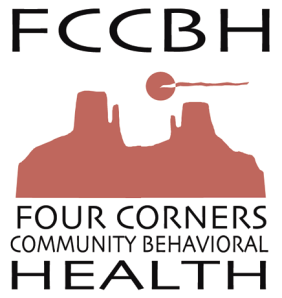(This is the first in a series of articles about mental health and drug issues facing our community)
Despite a focus from local mental health and community leaders, suicide rates in Carbon County continue to remain alarmingly high. Four Corners Executive Director Karen Dolan and Darrin Brandt and Director of USU Eastern Counseling and Disability Center provided some statistics to bring the severity of the issue into focus.
Utah suicide fatalities have increased from 350 in 2005, to 540 in 2012. Utah has the seventh highest rate of suicide in the nation. Carbon County has the second highest suicide rate in the state.
Phone calls to dispatch concerning suicide have risen since July of 2009. From July 2009 to December 2009 36 calls were made. The number climbed to 87 from January 2010 to December 2010. By January 2011 to December 2011 dispatch fielded 122 calls. In the final period from which statistics were available, January 2012 to December 2012, the number rose to 158 calls. The figures were provided by Ted Cartwright of Price Dispatch.
“This represents the disturbing trend in the number of suicide calls our law enforcement officers have been going out on,” Brant stated.
Dolan added a little insight about what may be contributing to the rise in numbers.
“I believe that in our society today it feels like there is constantly a crisis looming. The news reminds us continually of the pressures we are under; from the economic downturn of the past few years, public shootings, natural disasters, fires, tornadoes and every week it feels like we are on the edge of a new kind of financial or economic cliff, people have lost jobs, homes and benefits,” he said.
A grass roots suicide awareness coalition has formed and is meeting on a regular basis in attempt to turn the trend. It met Tuesday to speak about a program called the “Hope Project.”
USU Eastern will be looking to implement the project this fall. Brandt said Carbon School Superintendant Steve Carlson had positive a response to the project and if details can be worked out, it also might be a tool district wide.
“There is absolutely a need for our group and I believe there is so much we can do to help.” Brandt said. “It is a model that has a community approach that works to reach every person in the area not just that helps our schools. Every member of our group can have a positive impact in the lives of those in our community with the least hope.”
Dolan also wanted to make the community aware of the ways Four Corners Community Behavioral Health has been dealing with the crisis.
“We cannot do it alone and we are very pleased that the community has gathered together in this effort to develop a coalition to prevent suicide.
“Governor Gary Herbert recently signed into law an initiative to reduce suicides in Utah and a full-time suicide prevention coordinator position has been created at the state level to address this critical issue.
“Over the past few years, the professionals at Four Corners Community Behavioral Health have seen a dramatic increase in the number of crisis calls and situations in the communities we serve.
“It’s important to realize that for every suicide call that comes into our local dispatch there is a Four Corners crisis therapist that personally responds together with law enforcement to help alleviate the crisis, set up a safety plan with the family, hospitalize when needed or even involuntarily commit the person to a psychiatric facility if that is what is required,” Dolan said.
She also explained that for every call that comes into dispatch, many more are received by doctors, therapists, schools and others. Four Corners not only responds to law enforcement’s dispatched calls but also to crises in local hospital emergency rooms, ICU departments, emergencies in the schools, and suicide assessments in county jails. Four Corners also responds to private calls from citizens.
“From the amount of calls and individuals currently in our services, I‘m sure our therapists are saving lives daily,” Dolan said. “For every completed suicide, there are 100-200 suicide attempts made.”
Studies have shown that 80-90% of those who complete suicide were not in treatment at the time. Many had been in treatment and stopped. Getting those persons into treatment or keeping them in treatment is critical to prevention.
The stigma of being labeled mentally ill, the cost of treatment, and other factors contribute to individuals not seeking treatment. Just like the Heimlich maneuver has nearly eliminated choking deaths, community coalitions and trainings such as mental health first aid can reduce the stigma of getting help. They can also help increase the public’s response to a person suffering with mental health problems, engage those suffering into treatment and could potentially reduce or eliminate suicides in our community.
Dolan concluded, “Four Corners has a trained therapist that is willing and able to provide mental health first aid training for our community. We also have some funding for short term mental health treatment for people who have no insurance.”
National Suicide Prevention Lifeline 1-800-273- TALK (8255).

